UPDATED REVIEW
– June 1, 2023 – Roland FRP-1 Digital Piano at Costco | Portable model with furniture stand and bench priced normally at $699 plus tax. Sometimes this model will also be at a lower sale price. Costco is a popular store for in store and on-line sales. During the year they always seem to have a few digital piano brands and models for sale and then occasionally during the holiday season they have one or two digital pianos models that you can actually see in person in some of their stores. Such is the case with the Roland FRP-1 portable digital piano.INITIAL THOUGHTS ON ROLAND FRP-1
First, before I talk about the FRP-1, I want to mention that as I said before, the FRP-1 is really a rebranded FP-10 piano. The FP-10 piano originally was priced at $600 by itself a few years ago (without stand or bench) including the music rack, sustain pedal, and power supply. It is the identical piano to the FRP-1 but the FRP-1 comes included with a padded bench, piano stand, and headphones.
KEY ACTION
As for the FRP-1 piano itself, it is an 88 weighted key instrument using Roland’s PHA-4 key action which is Roland’s basic, but nice entry level weighted key action. It has been out for a number of years on various Roland piano models including the FP-30X, RP-102, and F701. That particular key action has the synthetic ebony and ivory keytops and definitely has some weight as you press the keys down. Some people consider this keyboard action movement to be a bit heavy as opposed to some other new digital pianos, and I would agree with them. Most acoustic piano key actions that I have played on are lighter weight than this one when pressing down the keys.
The key action is also a bit noisy when you press down the keys and it thumps when going down, especially if you have the piano volume down lower or using headphones for private practice. At that point you can hear the “thumpy noise” when the keys hit bottom. Some people may be bothered by that and others may not be bothered. There are piano weighted key actions in other brands and models in this price range which are quieter when the keys go up and down and I definitely prefer it that way. However, you may like it depending on your piano playing experience.
PIANO SOUND
I play the piano a lot and have for many years. I play all types of acoustic upright and grand pianos along with a big variety of digital pianos. One thing that is important to me is for a piano to be “in tune” when I am playing it. I just do not enjoy playing any piano that is out of tune and I know many people would agree with me on that point. So it comes as a disappointment that the main Roland Grand Piano sound sounds “out of tune” to me. I have discussed this many times in other Roland piano reviews I have done on some additional models that use this piano sound engine.
Tuners and technicians need to know how to do this type of tuning before they tune a piano because they can easily mess it up and the piano can sound noticeably out of tune when you go to play upper notes along with lower notes at the same time. If the tuning is set up correctly then you get a beautiful result with regard to the overall tuning, tone, and resonance.
All this is because the stretch tuning method that Roland uses is just stretched too far in my opinion and produces a piano sound that seems to be noticeably too sharp or too flat depending on the notes or chords that are being played together. Some people may not notice this but other people will notice it and may think there is something wrong with their ears. But there is nothing wrong with your ears The piano is just not set up with its stretch tuning very well in my opinion and there is nothing you can do about it.
For this reason I would not personally purchase the FRP-1 or any other Roland model that uses this specific piano sound engine. My ears are a just too sensitive to pianos being in tune with proper stretch tuning so that notes do not sound sharp or flat when played together. I have played on many other brands of digital pianos in this price range and above and I have not run into this issue with them including Korg, Yamaha, Casio, or Kawai.
SUSTAIN PEDAL
When it comes to the pedals on a piano, they are very important, especially the main sustain pedal. Roland includes a basic square plastic sustain pedal switch with the piano called the DP2. This is an on and off pedal switch that allows you to activate the sustain and holds the piano sound when you press down the pedal. When you release the pedals the piano sound stops sustaining.
INSTRUMENT SOUNDS
As far as the other instrument sounds go, there are 15 instrument tones including the 4 pianos, 2 electric pianos, and the other instrument sounds include strings, organs, harpsichords, vibraphone, pad, and jazz scat which is a cool sound. You access all those sounds by pushing a “function button” on the control panel and touching an appropriate black or white key at the same time to trigger the sound you want to play. Once you do that step then the FRP-1 is set up the play that sound.
PIANO POLYPHONY
Polyphony is normally defined as the total amount of piano processing memory for the piano sounds. In reality it has to do with the maximum amount of (mono) piano notes played and heard simultaneously when playing and sustaining multiple piano notes together at one time. Depending on the complexity of the instrument sounds that you are using, the amount of polyphony processing power that you have can be limited by a lower amount of “polyphony” as opposed to a higher amount of polyphony. The FRP-1 has 96-notes of polyphony so it’s a bit on the low side (hence the lower price of this model) and it’s using Roland’s entry level sound engine in that way.
CONTROL PANEL BUTTONS
The FRP-1 control panel is very simple. You have 4 toggle buttons to access all functions on this model and those functions include being able to digitally transpose keys, select 5 types of key touch sensitivity, selecting all the instrument sounds, selecting ambience/reverb, brilliance control, metronome for timing including the tempo, beat, and volume of the metronome, and an internal song library including 17 full length songs and demo tunes for each of the 15 instrument tones.
BLUETOOTH WIRELESS MIDI
The FRP-1 also has Bluetooth wireless MIDI connectivity.
This wireless MIDI connection allows you to connect with an external Bluetooth device to be able to use apps and software without having to plug in a USB cable. The Bluetooth connection really does not do anything different with regard to what the apps and software will do for you.CONNECTIVITY PANEL
When it comes to overall connectivity, the FRP-1 has a USB output to device, an update computer port for any possible future updates to that model (I doubt if they will ever update it), and 2 headphone jacks. One of the jacks can be used as an audio output jack but when you do that then it automatically shuts off the main internal speaker system so that’s not a good solution.
INTERNAL SPEAKER SYSTEM
The internal speaker system inside this piano is a bit of a disappointment but in this price range that’s not unusual. The FRP-1 has 2 smaller speakers under the piano and pointed down to the floor. Unfortunately the sound is pointed away from the player (you) when you play it and sounds somewhat muffled and far away as opposed to being pointed up towards you like you would other wise find in Yamaha, Korg, and Casio digital pianos in this price range.
The cabinet is sleek and fairly attractive at about 51″ long and weighing in at about 27 lbs. It connects to the stand nicely and the bench seems to have good support and can open up a bit for inside music storage although you would probably run out of interior bench space soon enough. Most people like an adjustable bench for family members who are at different heights so the single bench that comes with the FRP-1 cannot be adjusted. The piano also comes with a music rack to support your music.
FINAL THOUGHTS
ALTERNATE DIGITAL PIANO OPTIONS
There is another well known digital piano brand called Korg. Korg is a Japanese brand and are very well known to musicians around the world for their innovated stage and home digital pianos and keyboards and have been making them for many decades. There is another model that is an excellent alternative to the Roland FRP-1 and it is called the Korg B2SP. The B2SP which is priced at $749 internet price is an 88 weighted key piano that also comes with a matching stand and full triple pedal unit.
The upgraded triple pedal is normally another $100 more but already is included with the Korg B2SP piano. The piano does not come with a bench but you can purchase a better, adjustable matching bench on Amazon for a fairly low price. The Korg B2SP has quiet key action, responsive sound dynamics and piano sustain, and a more full and less brassy stereo piano sound that uses new sound technology to achieve a higher level of realism without any tuning issues. The internal speaker system is amazing with 30 watts total stereo power and a sound resonating chamber inside the piano for better bass response. It also has the new USB audio streaming technology which is a big “plus.”
The B2SP comes in both a black cabinet and a sleek, attractive white cabinet. It is priced at just $749 internet price for its package. Also, there is no sales tax on that model at this time as long as you ask me more about it. It also includes free shipping and full factory warranty anywhere in the mainland US. I would recommend you read my review of the newer Korg B2SP before you purchase the Roland FRP-1 or any other digital piano under $750. Korg B2SP Review
By the way, if you don’t need a stand, headphones, bench, or other accessories packaged altogether and just want an impressive portable digital piano under $700,
then the Casio PX-S1100 at $699 could easily be another option. This new model definitely has excellent piano sound and dynamics with responsive piano weighted key action along with some exciting new technology not in other digital pianos. Great for students and also more advanced musicians. This model also has an optional furniture stand and triple pedal unit if you need it. Check out my review on this piano at the following link: Casio PX-S1100 Review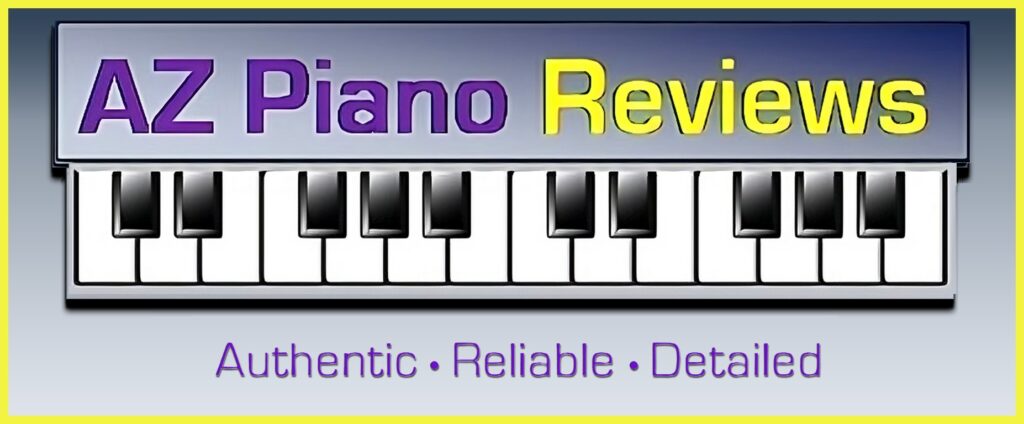
























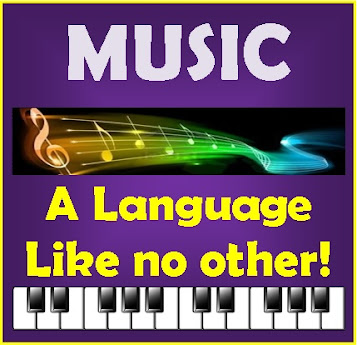
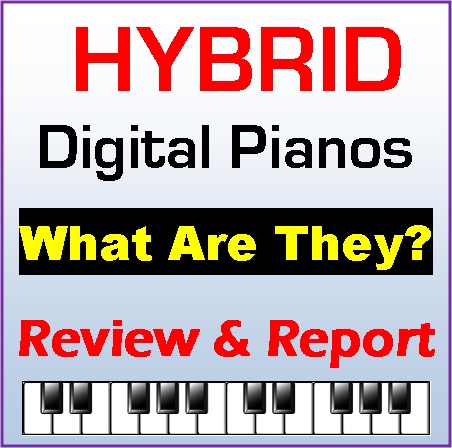
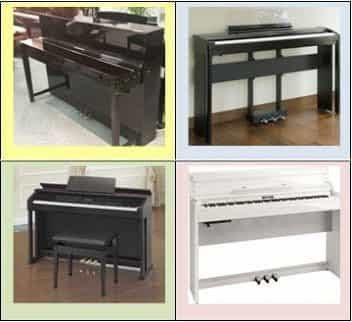
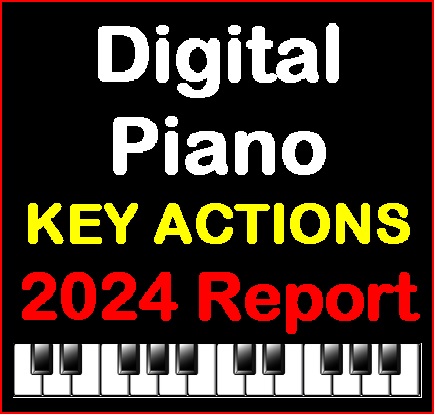
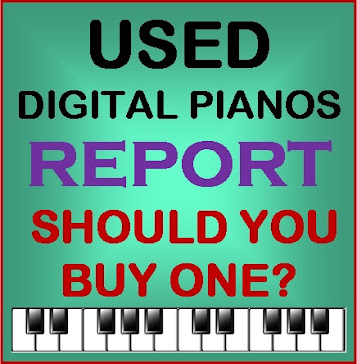
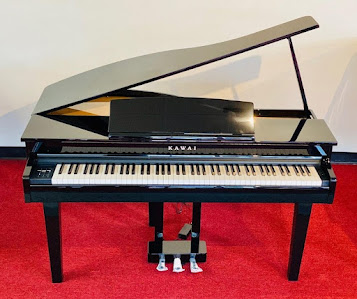
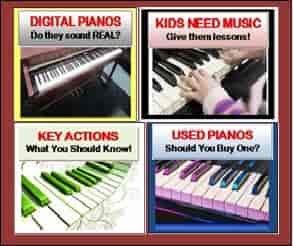
Extremely knowledgeable! Glad I stumbled upon their site!!
Thank you. I wasn't sure and your info was
appreciated.
Thank you very much for your information.
Thanks for the great information. Glad I foo this.
Thank you for your insight!
Enjoyed reading your detailed review. Thank you.
I’m more familiar with USB MIDI connection to use with a PC software program (not an iPad App) This ROLAND says USB but doesn’t mention MIDI. So I’m not sure it will work
I wonder if it has to have the stand? Can I use it on a table top or as a gig keyboard on a traditional keyboard stand?
Like all portable digital pianos, this Roland FRP-1 does not need the Roland furniture stand to play it. You can put this digital piano on a table top or on a portable metal stand.
You don't like the sound engine because of the stretch tuning, but it has the SuperNATURAL engine that's supposed to be so good. Would all Roland's with SuperNATURAL have this stretch tuning problem?